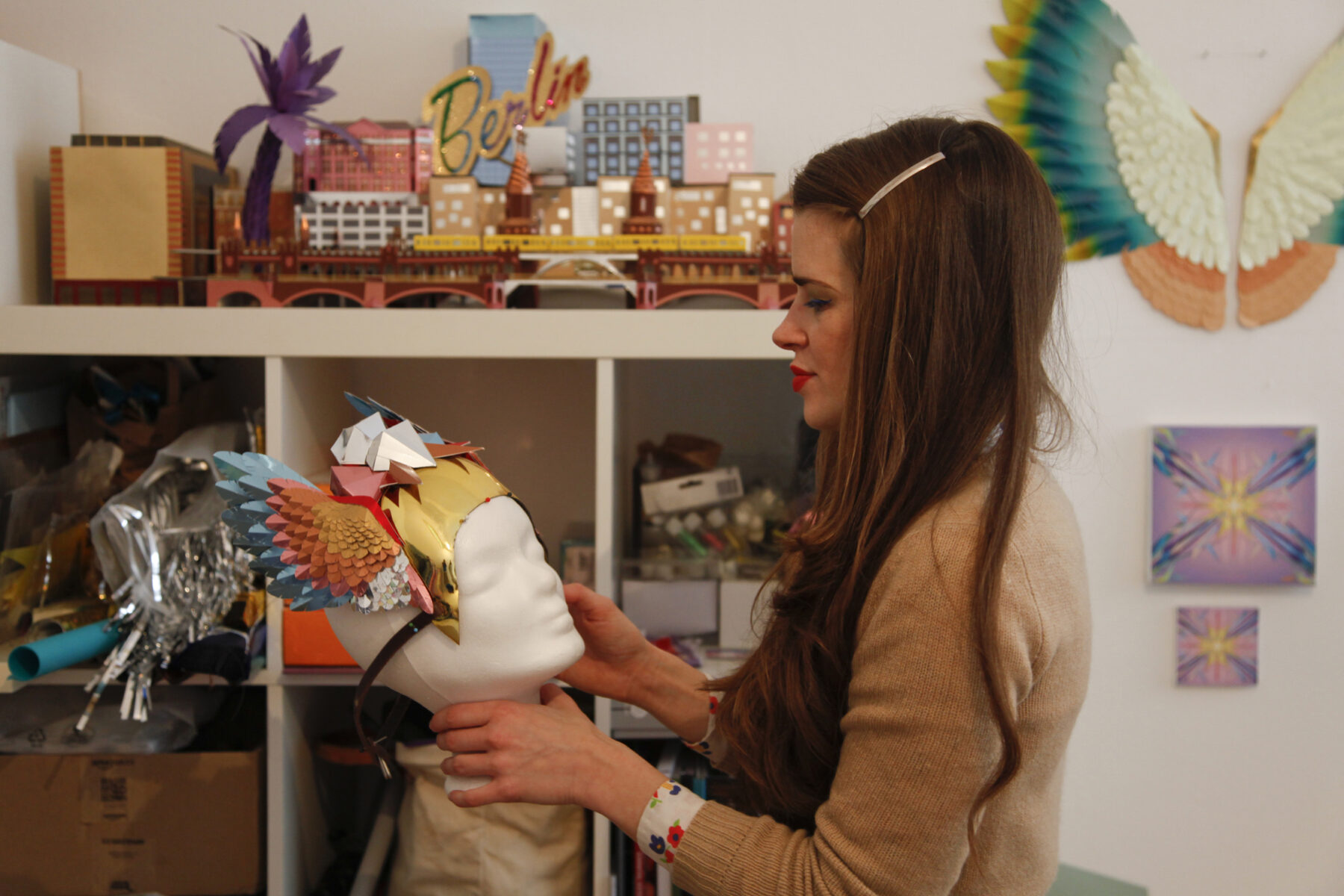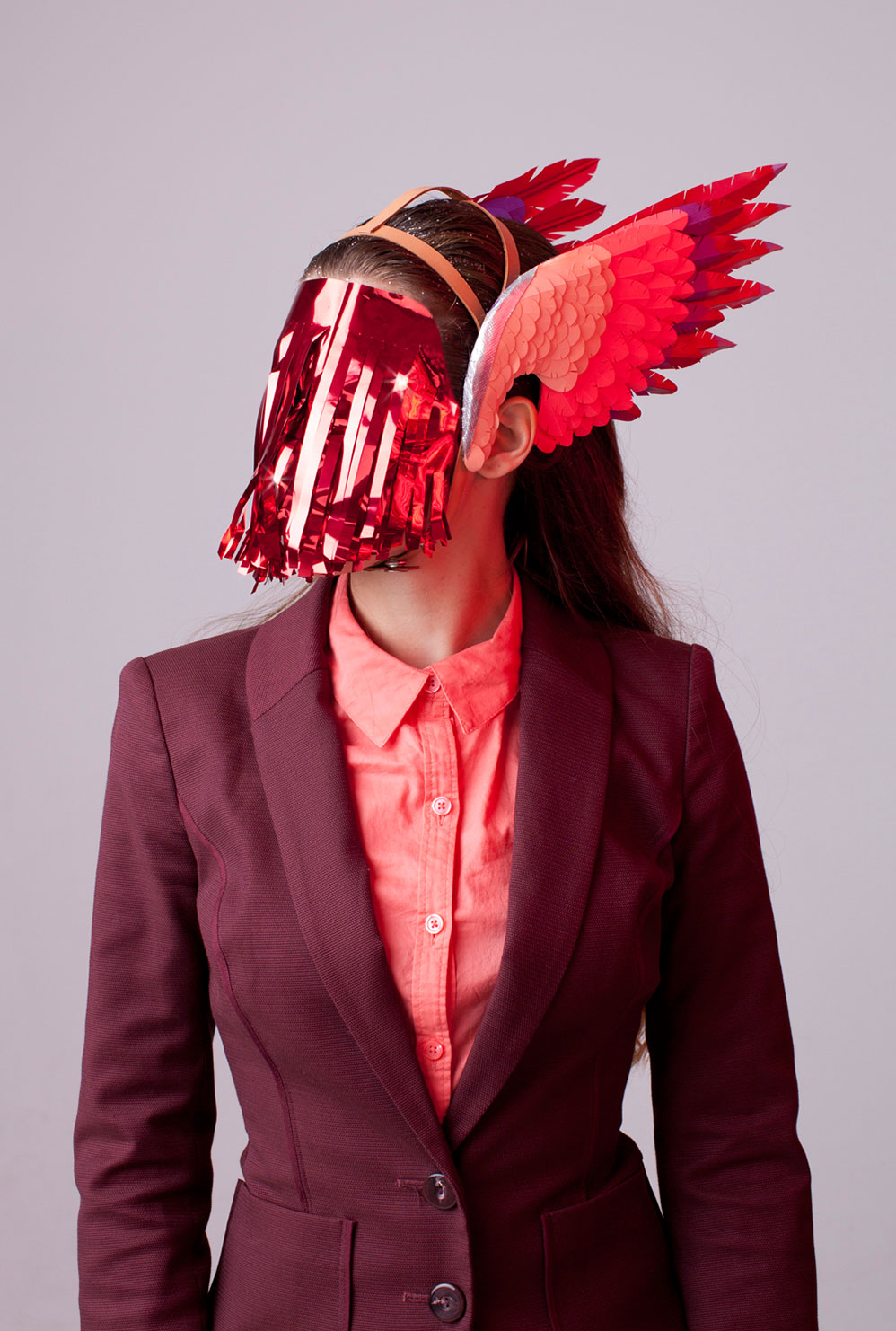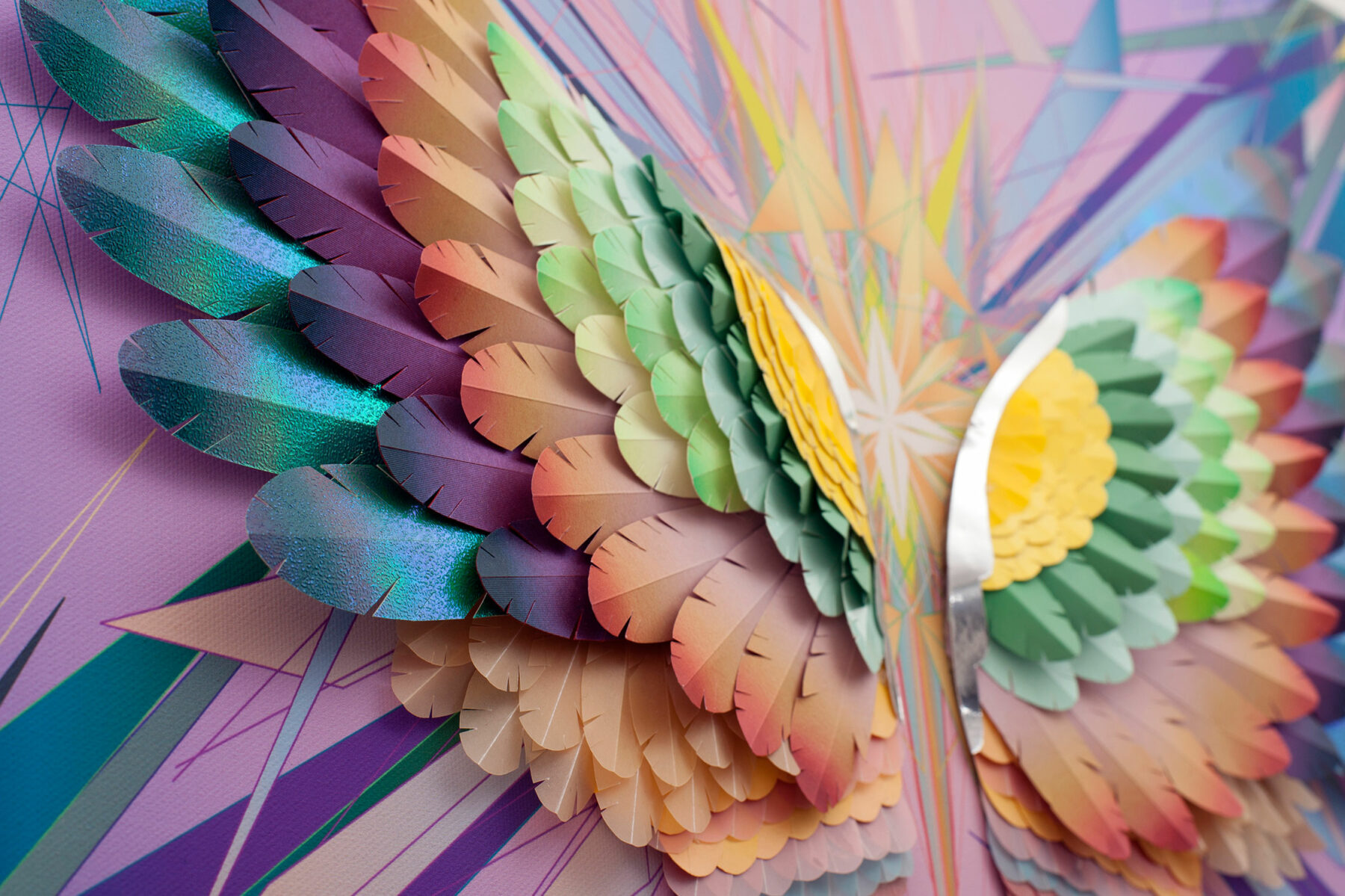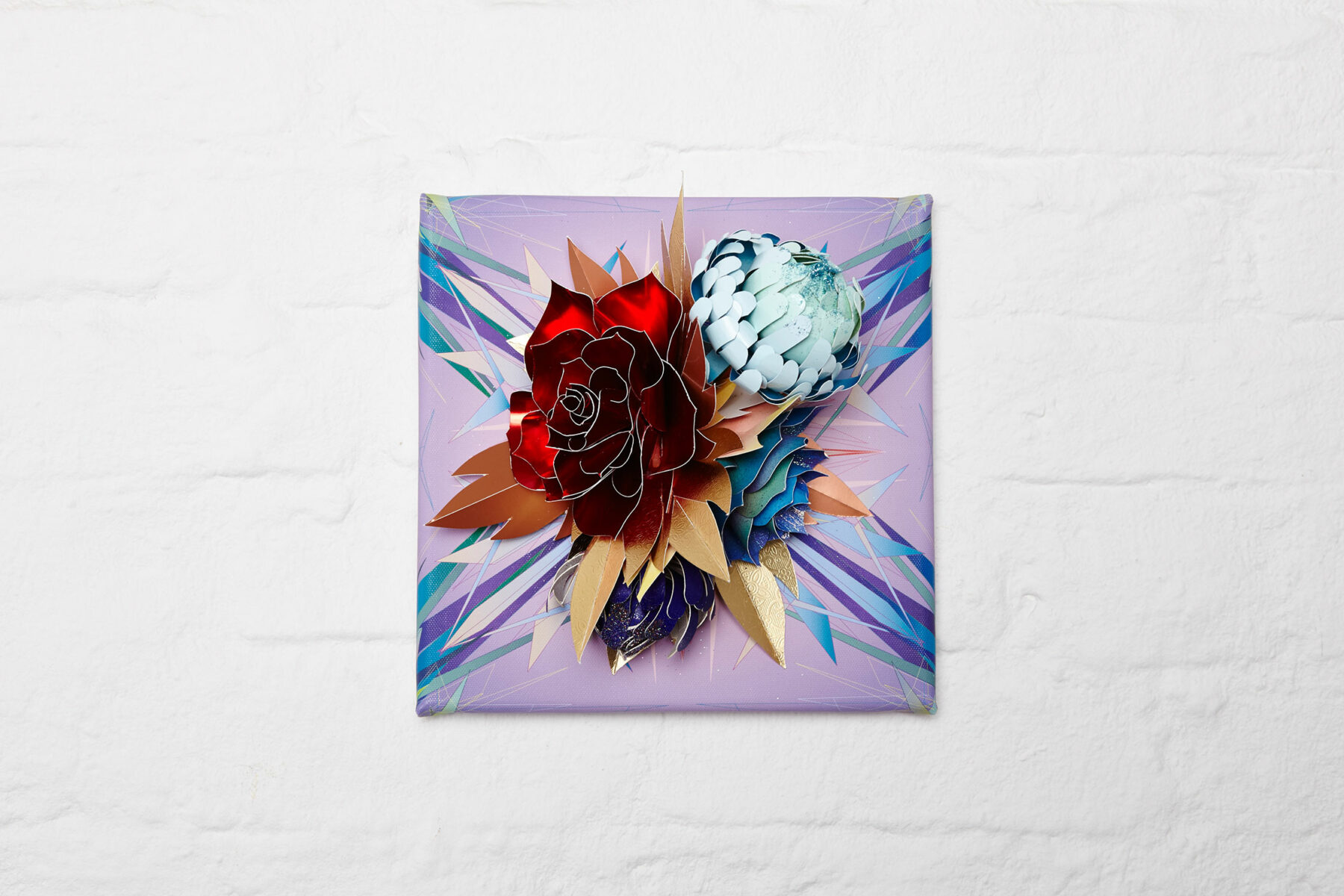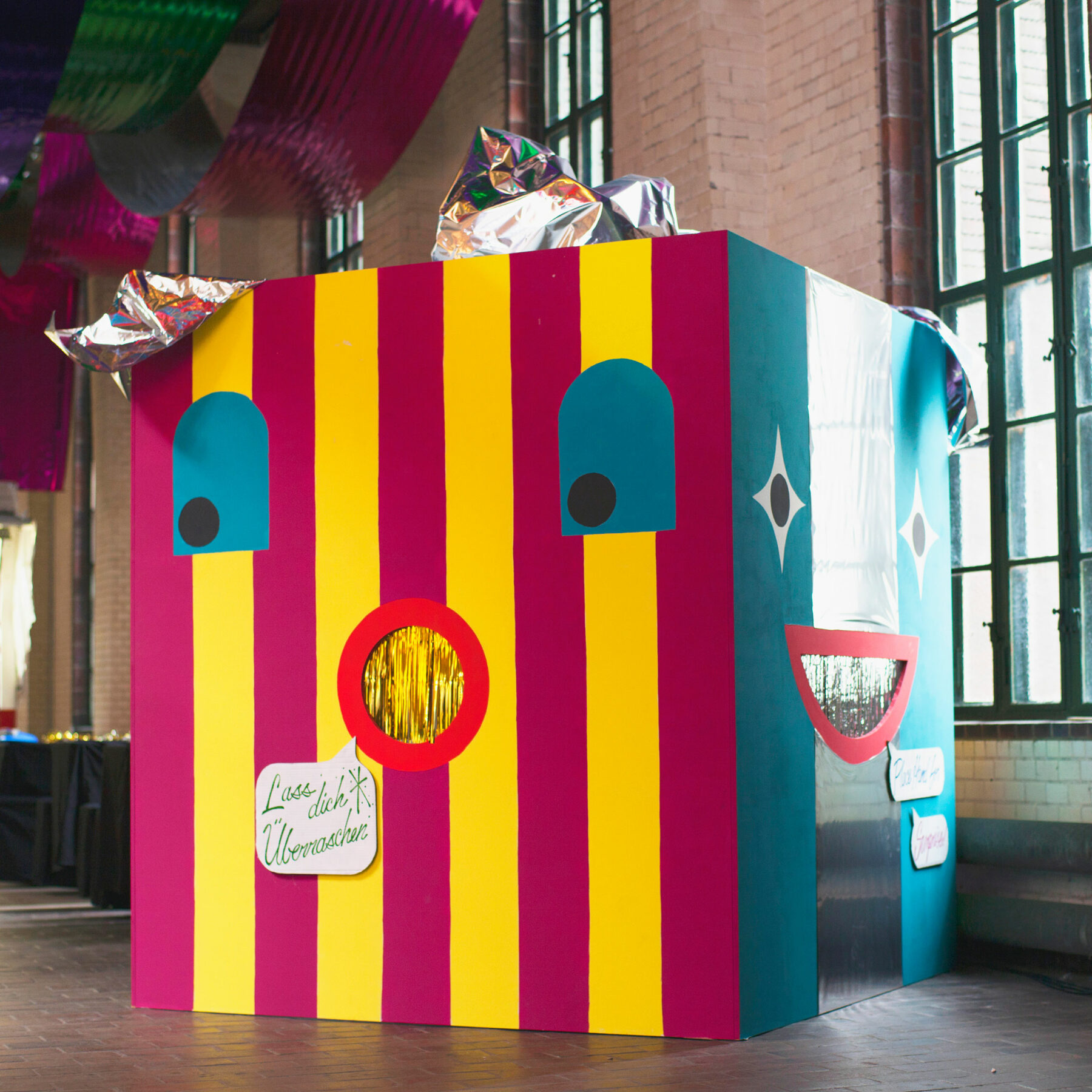Paper is not synonymous with sculpture, but artist Lacy Barry deftly transforms the 2D material into tactile worlds.
Self-taught Lacy’s works cross the borders of fine art and advertising, always maintaining the same scope: to create an environment that invites the viewer to indulge in various senses. Born and raised in a small town in western Canada, Lacy enjoyed a free-spirited childhood, adventuring through the wilderness without much restriction, a sentiment that would set the scene for her future. Her unbridled wanderlust has taken her around the globe, jumping into the creative industry early on with enough enthusiasm to make up for lacking experience. “The last 10 years has been a whirlwind of moving around,” says Lacy of her stints in London, New York, L.A., and Montreal where she built up commercial success in costume, prop, set, and interior design. Her own paper artistry fully took shape in New York and today is based in Berlin, her home for over the last year. Our conversation takes place in her compact, yet exuberant apartment and is punctuated by regular bouts of laughter, whether trying on pink shoulder pads resembling cheerleader pom-poms or recounting anecdotes.
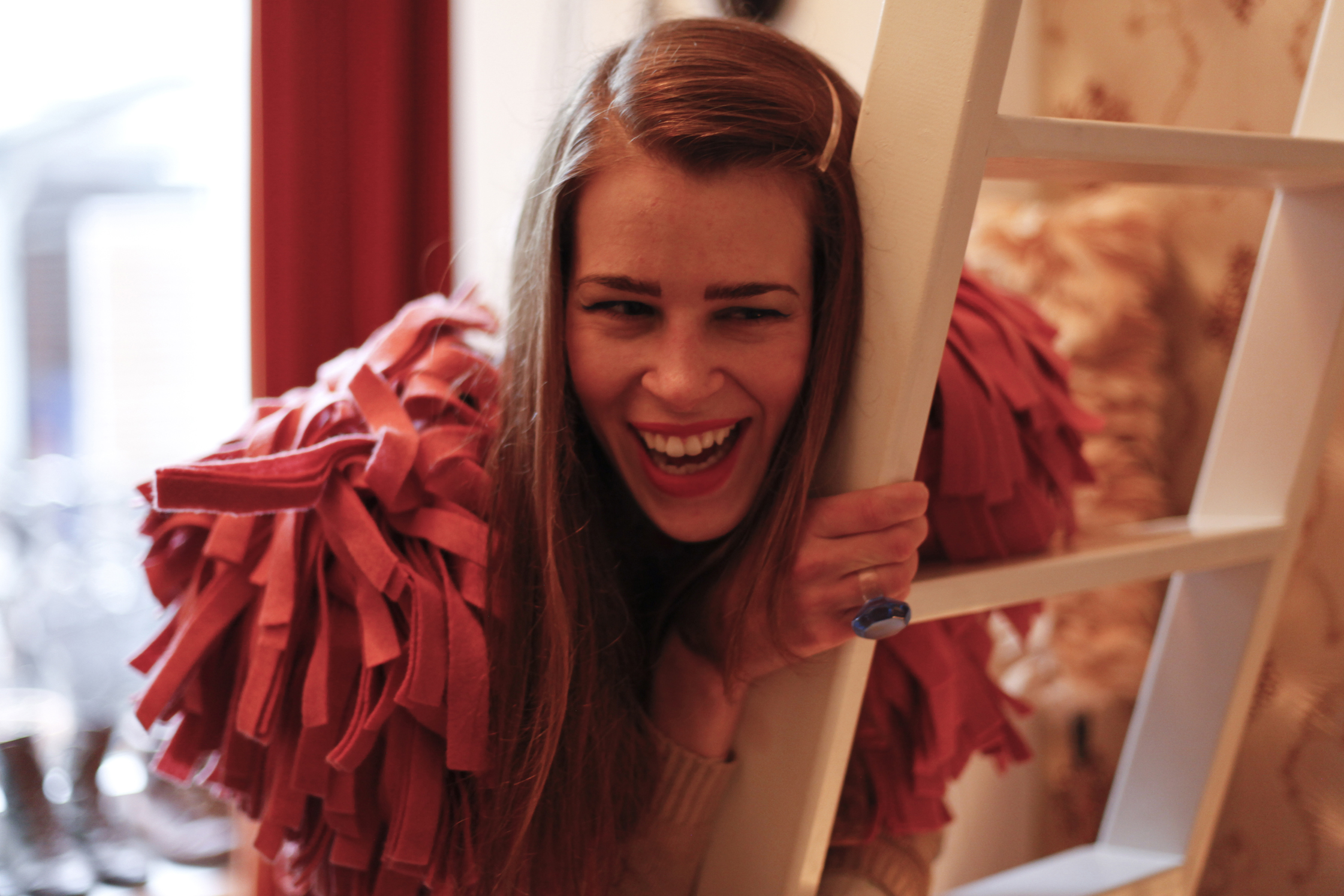
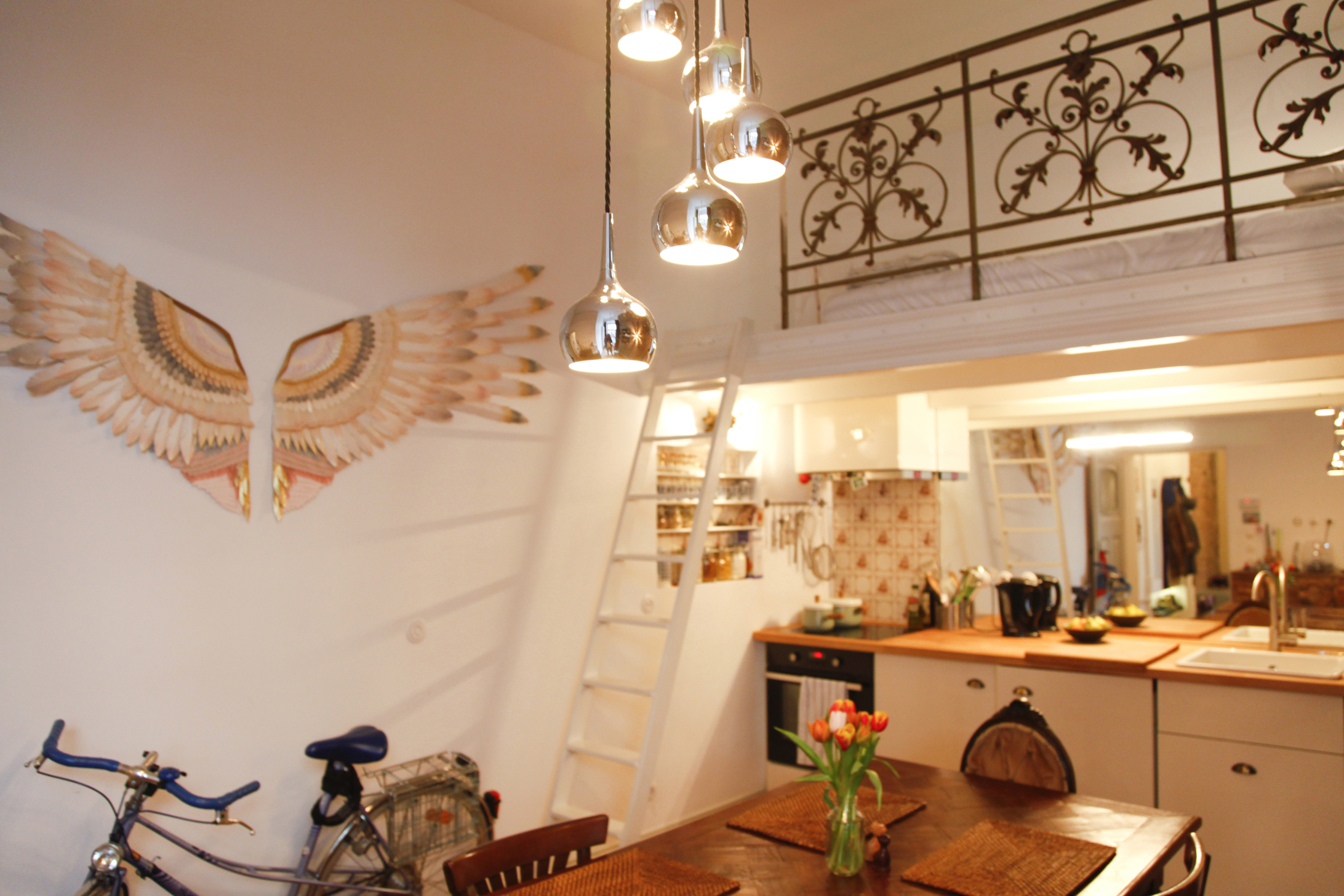
“My first memories of Berlin had been sort of dark and dingy, but then I discovered this underlying hyper technicolor.”
-
You grew up in a small town in the Rocky Mountains but have since moved around a lot, can you tell us a little about that?
I had a really awesome childhood, but when things are comfortable you think, okay I could go one way and have a very easy life but that could result in the feeling that I didn’t go as far as I wanted. I felt like I wanted to go out there and see everything I’d been reading about. And of course in a small town you’re so limited for resources. I remember listening to radio shows like Gilles Peterson and being like, ‘Oh my god there’s people out there who like this music’, or reading magazines and being like I wanna go to Paris because I’ve never seen this before and it’s like something out of a movie.
-
Did your travels live up to your expectations?
Well, when I went to New York for the first time, I was there aged 22 and making all these super intense outfits and being photographed all the time, because the world that I imagined of New York in my mind was so much crazier than what it actually was in real life. But…it kind of did happen in real life because I was attracting people to me who also had this big imagination and I was running around this city being taken to crazy parties by these amazing drag queens as their little friend [laughs]. When I look back on it, I just think, ‘That was hilarious.’
-
You’ve moved back and forth to New York. What keeps drawing you back?
New York is such a complex city, you’re constantly digging away layers of interesting things and subcultures that are happening everywhere. It’s kind of like the Emerald City you know, all the misfits end up there and make it super cool. I always thought I was going to stay in New York and become one of those old ladies who dresses eccentrically and makes ‘art’ [laughs] but maybe that’s not what’s in store. I still spend 40 percent of my time there and the other part in Berlin—I moved here by accident, I just wanted to try it.
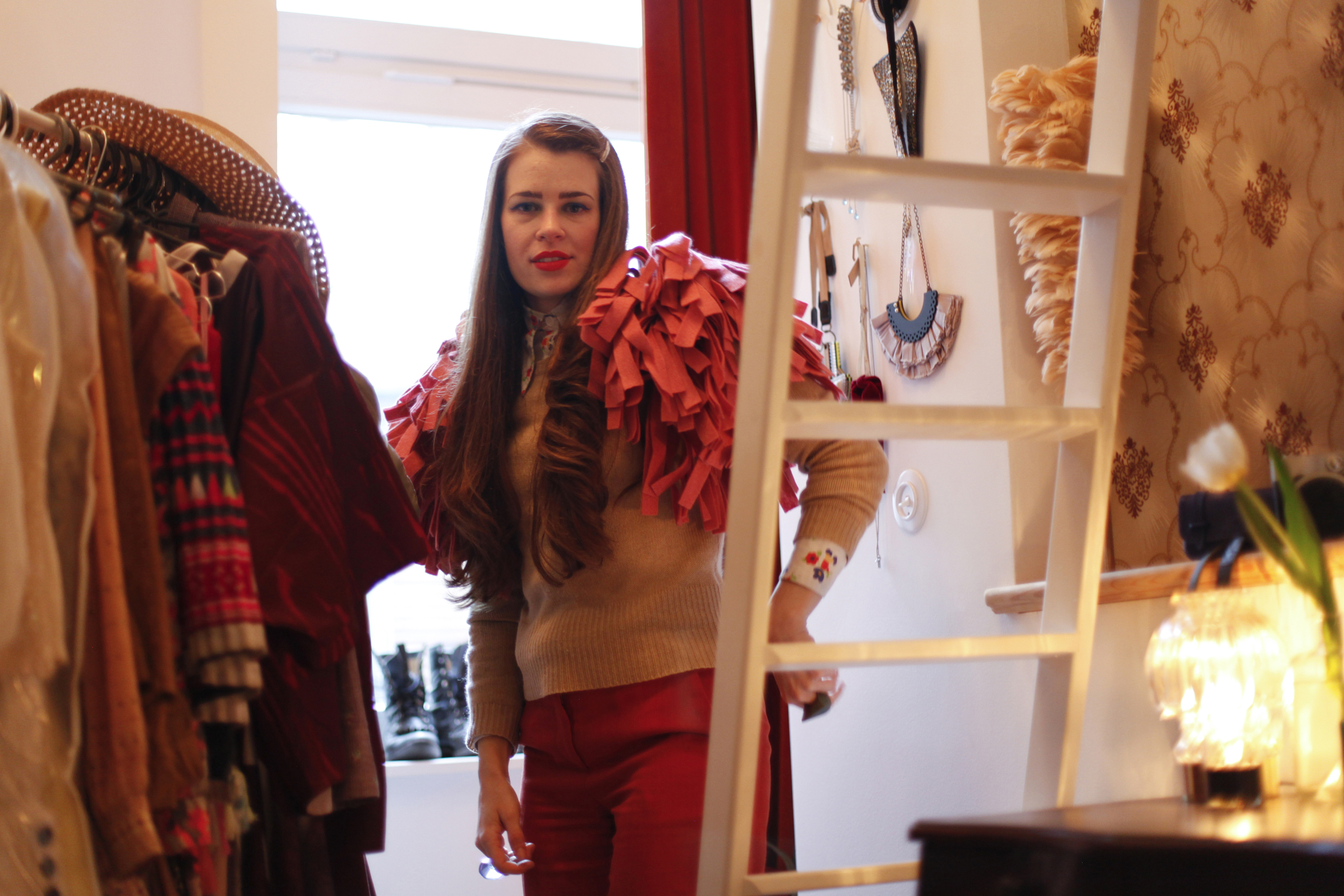
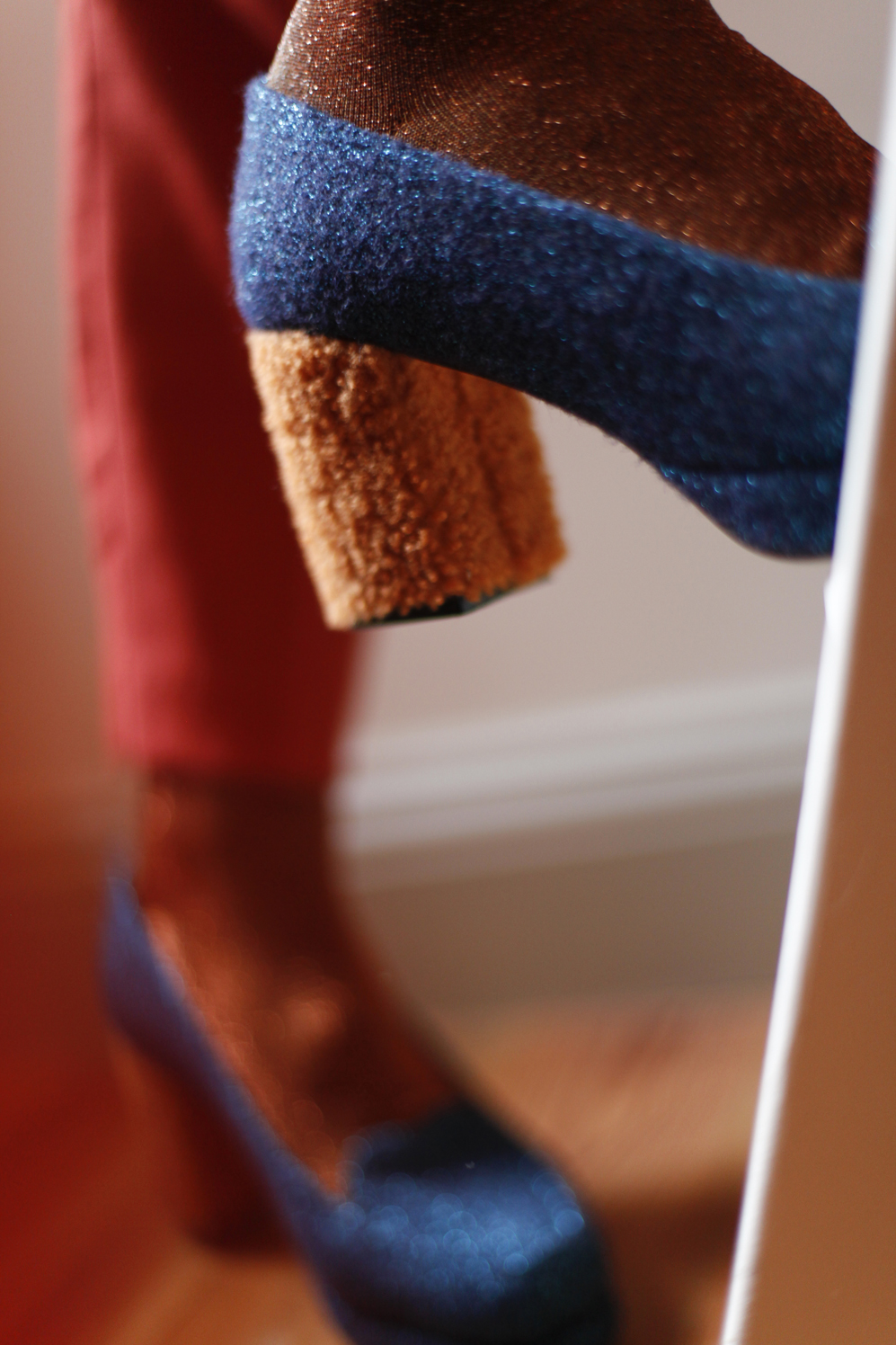
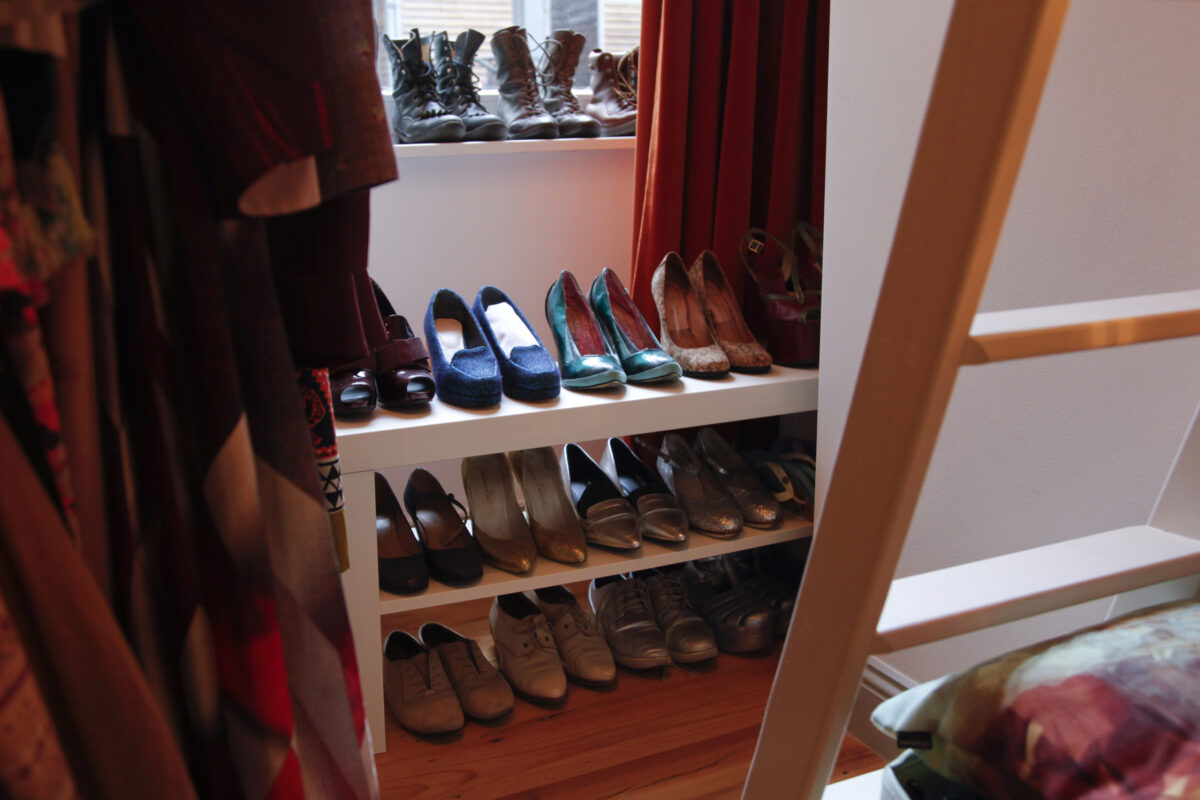
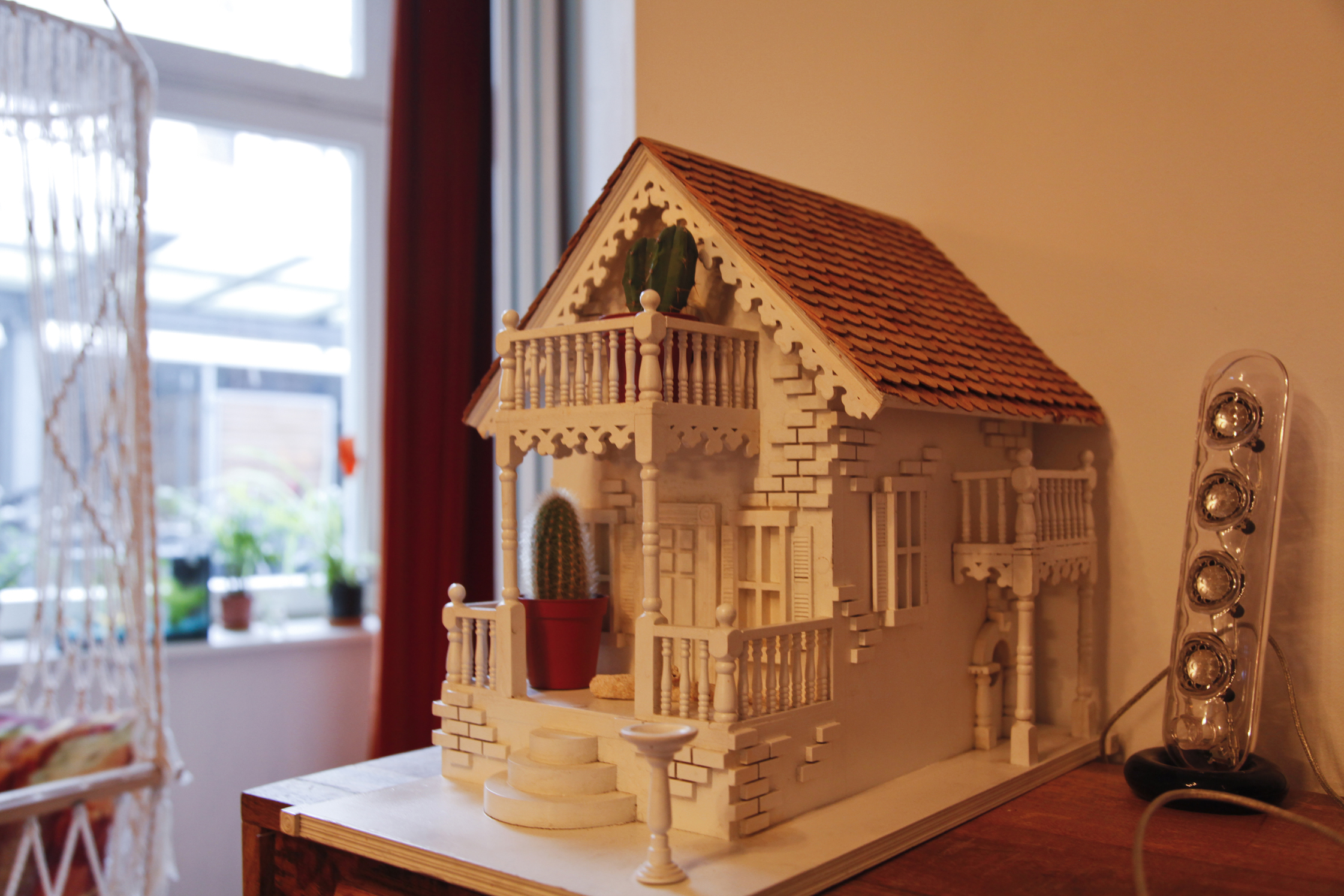
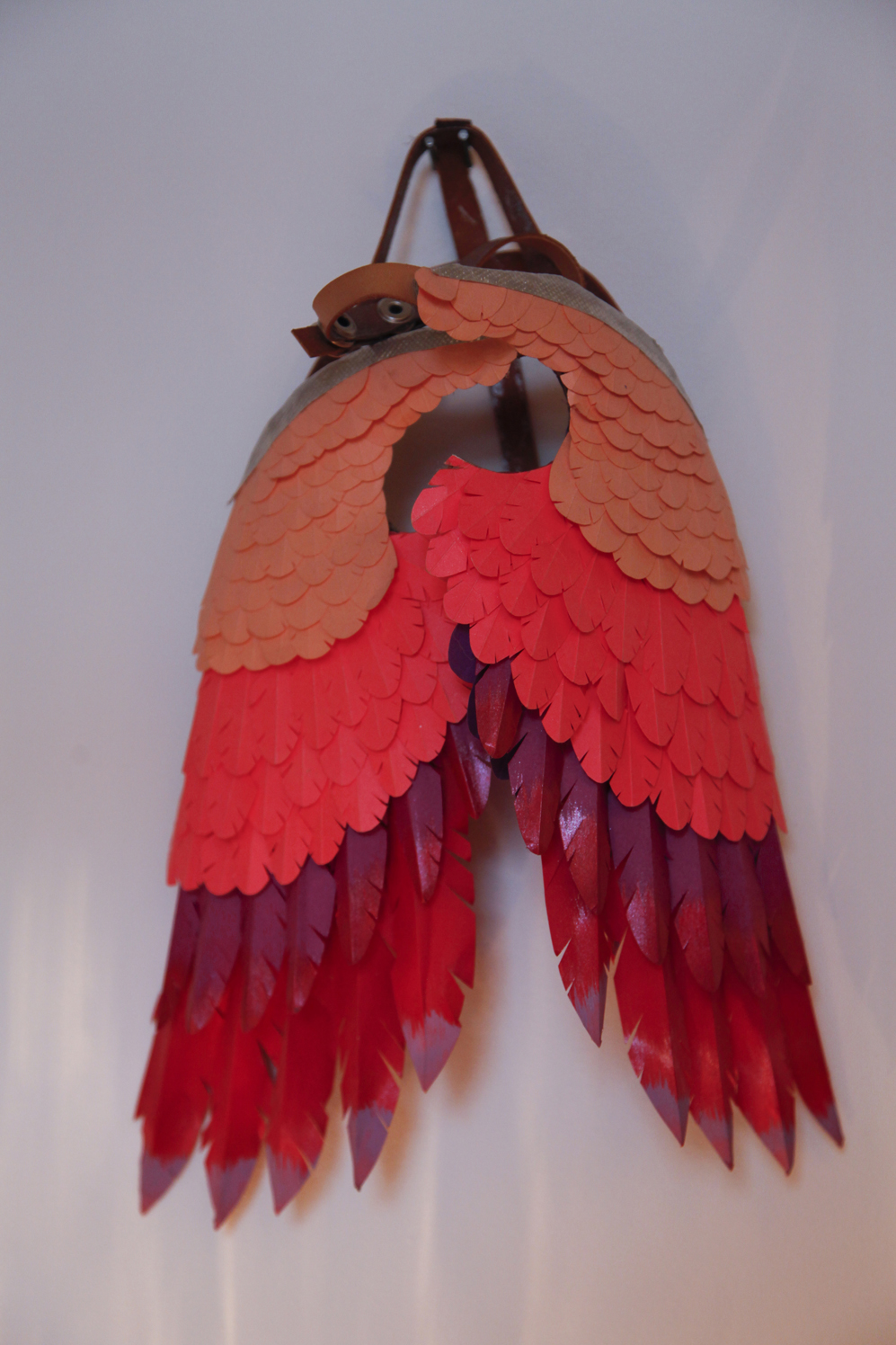
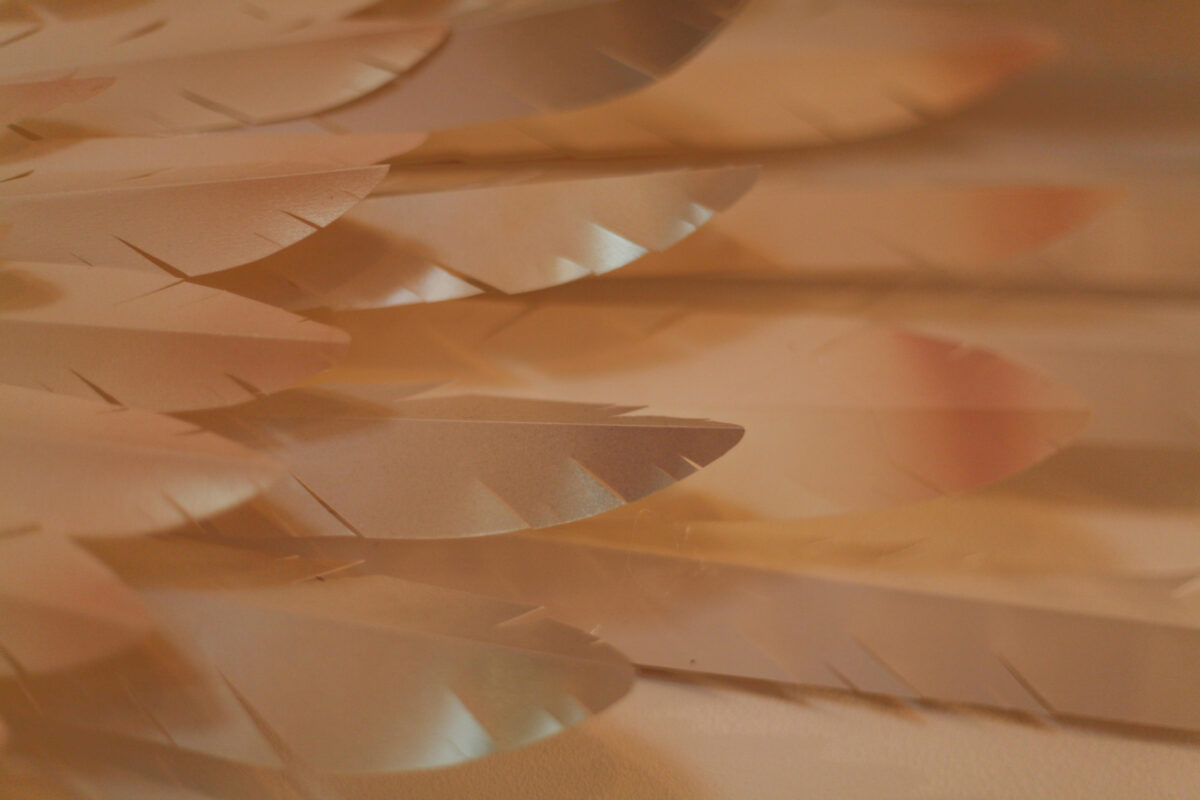
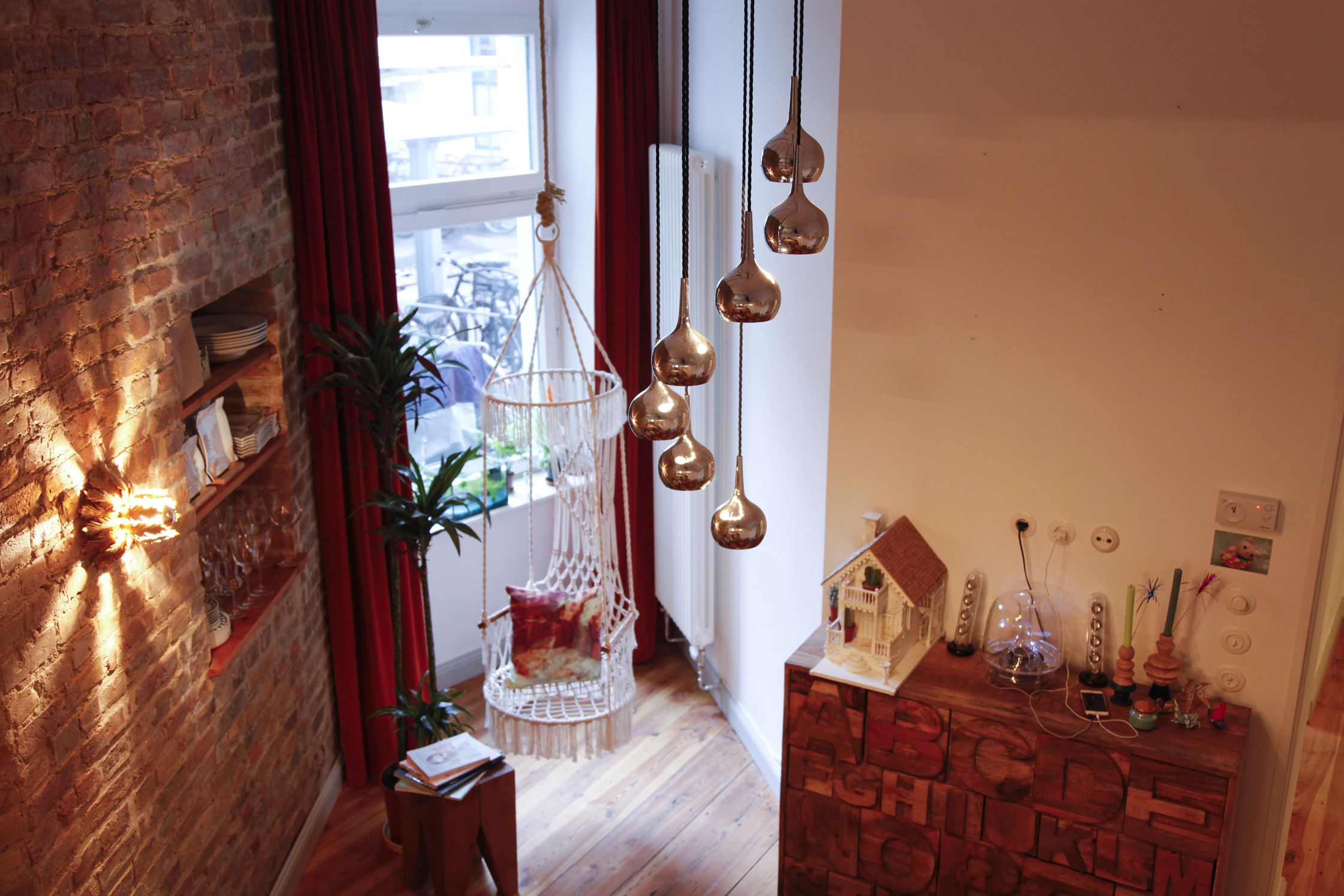
“I always thought I was going to stay in New York and become one of those old ladies who dresses eccentrically and makes ‘art’ “
-
You’ve worked in costume design and set and props and fine art. How did it all happen?
When I was in L.A. I was designing costumes for film and I was part of an art collective, Desire Obtain Cherish. When I moved to Montreal I basically had to start all over again. I got a studio and was working the odd job here and there, and just tried to funnel it into things I was good at. I just started telling people, ‘I’m a prop stylist,’ because that’s what I wanted to do. It was one of those things where you just rise to the challenge. I think that’s what keeps it interesting, there’s always a great possibility that it might not work but also a great possibility that it might.
-
When did you start working on your own artworks?
I was already working with paper but it was more for commercial projects. I couldn’t afford to get a studio so while my roommates were working in the day, I would turn the kitchen into my studio and I just started building the stuff from paper. In the meantime, I was also just introducing myself to different agencies and meeting people and things started happening quite quickly.
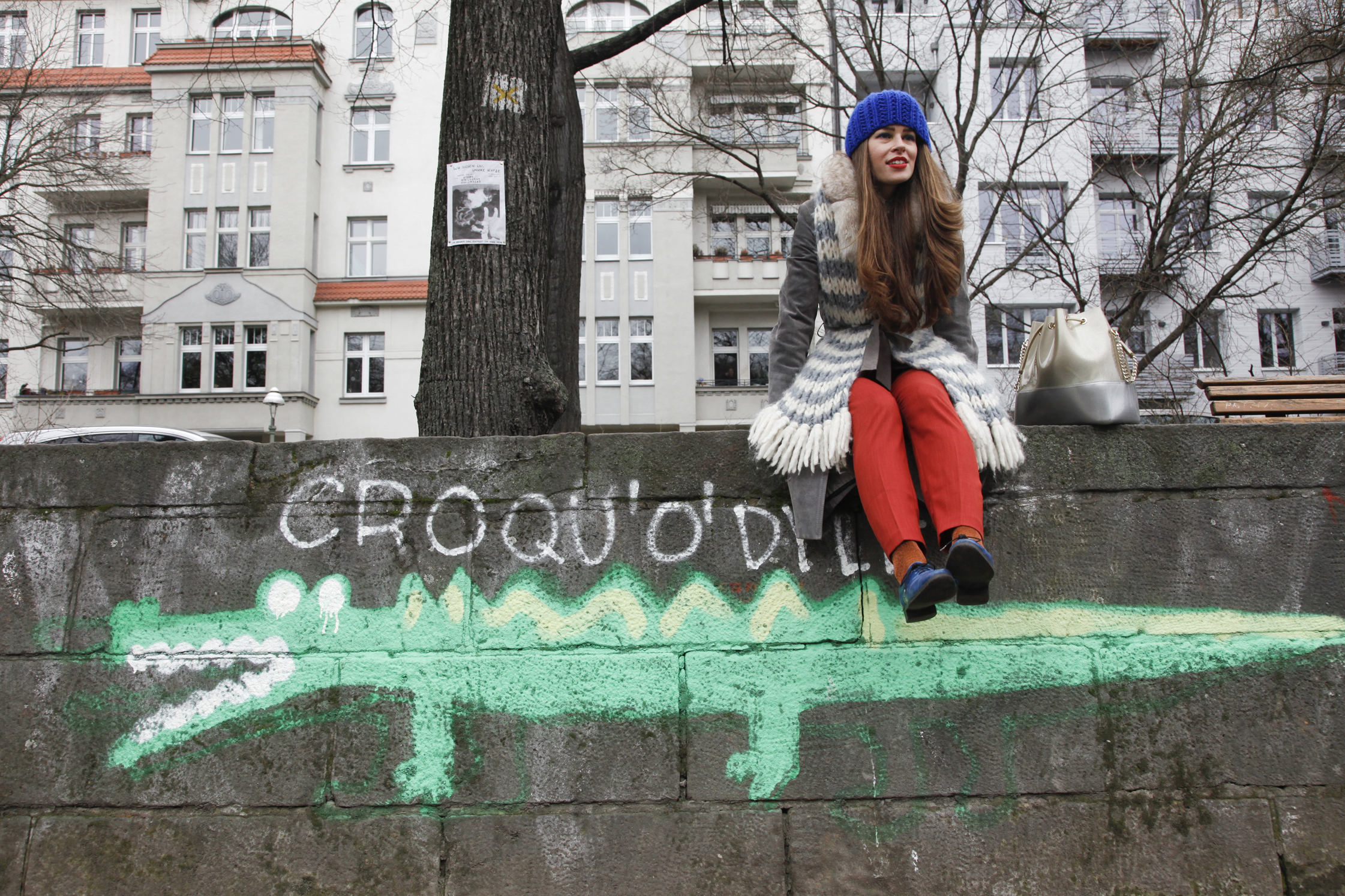
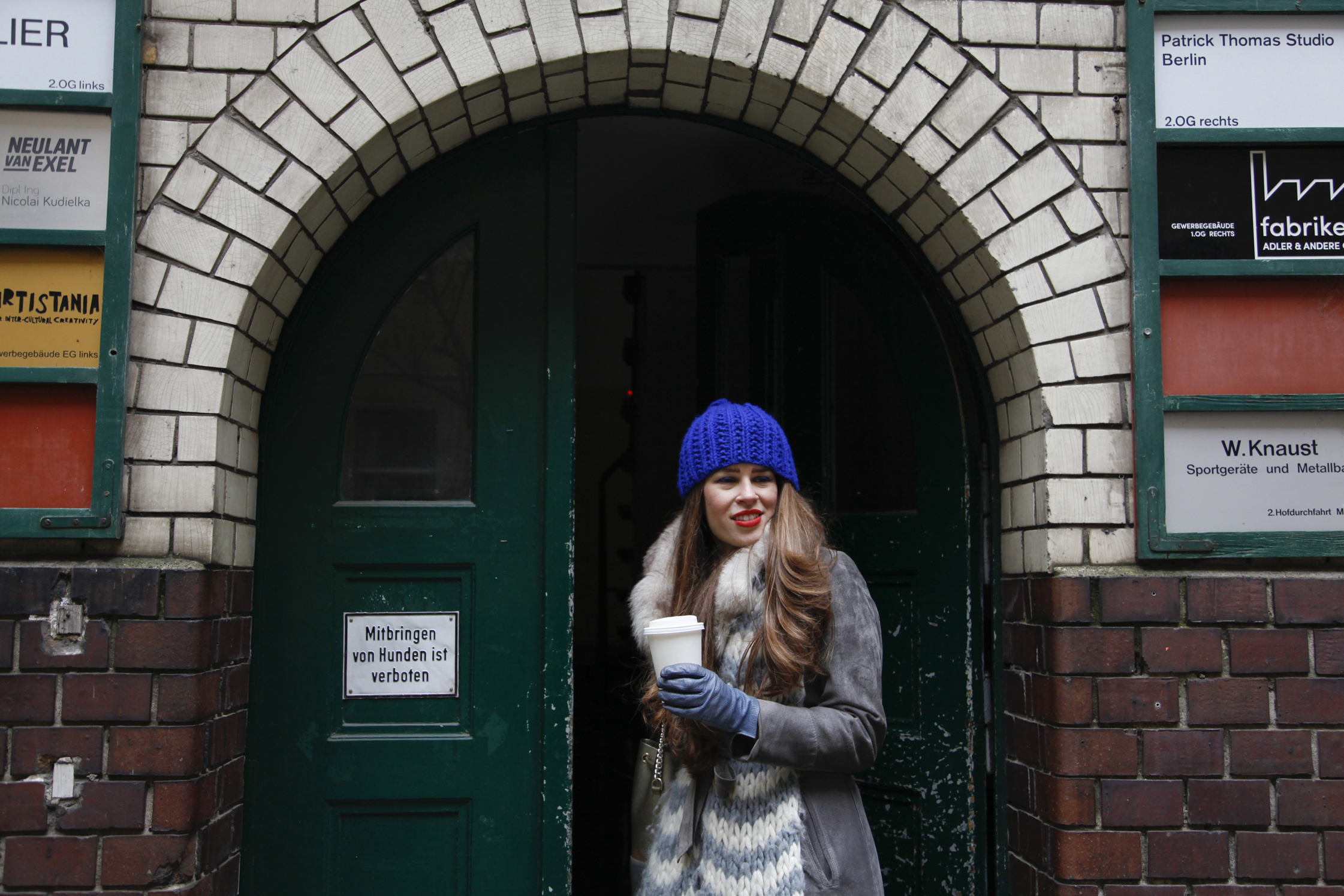
Lacy’s shared studio is a brisk, 10 minute walk away along the canal to neighboring Neukölln. Inside, a large work table is laden with giant paper roses, a rainbow lineup of paint bottles and slabs of paper at the ready. Client projects alongside ‘fun’, personal projects are displayed in the space. All are made with such visible care that’s it’s impossible to tell them apart. Her ‘fun’ works include various iterations her ‘Little Wings’, that also hang in her home. Some are proudly spread, others delicately draped, bowing airily to gravity in their crafted 3D life. Given the minutiae of details, for the novice onlooker the process seems painstaking, Lacy, however, is quick to dispel the thought.
Paper is really tactile, you can manipulate it in so many ways—you can crunch it you can fold it you can wet it and put it into pulp.
-
We’ve seen quite a few versions of your wing works today both in your home and here in the studio. Can you talk us through how you make them?
Making these works is really very therapeutic because they’re made up of lots of different pieces. I’m obsessed with testing out color all the time and paper and airbrush paint are the perfect thing to do that with. The little pieces and the repetition of putting it together—it’s not robotic—it’s more of a release because it’s all completely done by hand.
-
Do you make a preliminary plan of where you’re going to lay all the pieces?
Not exactly. I do one side and then the other, I don’t do the layers simultaneously. It is precise but they’re meant not to be perfect. Like a lot of things in nature it’s not perfect and actually the imperfections are what kind of make it beautiful. The backdrop that a lot of these pieces go on is this computer generated symmetrical mural, like a light explosion. It’s kind of nice to put this handmade thing against this perfected thing, it’s like two different worlds coming together. Testing out these two things that might not traditionally work together and inventing a scenario where they do.
-
When working on collaborations, are you given free reign? How much of your work is dictated by their creative visions?
Not always. Sometimes they provide a theme and concept, sometimes they have a really strict mandate, it depends on the agency. Sometimes it’s just a brief like we need to create a paper city, or 3,000 origami birds. Sometimes I’m hired as an artist and I direct the vision. I’m looking at it with a pair of fresh eyes and from a directive of what could be effective for people to create the world: the environment.
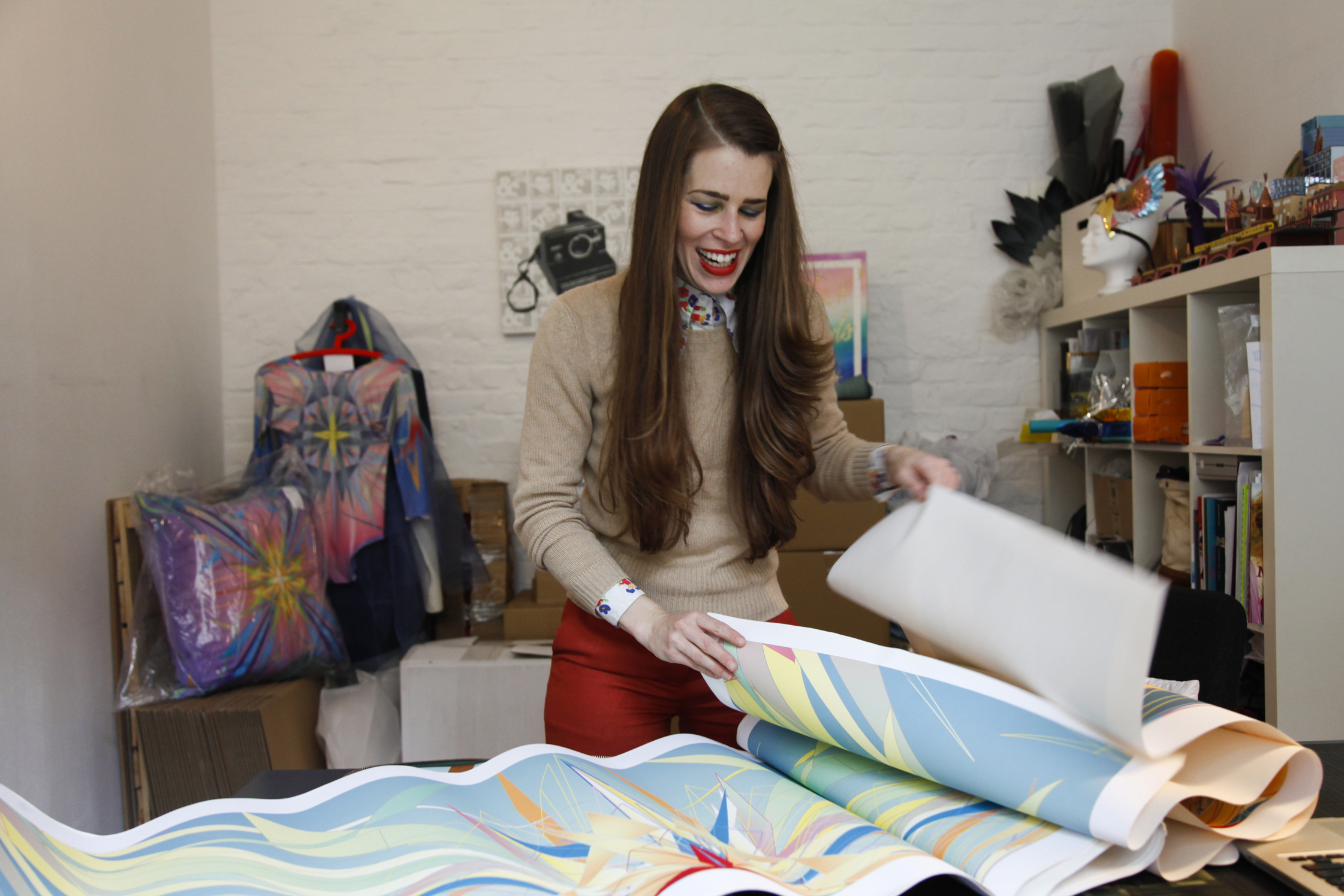
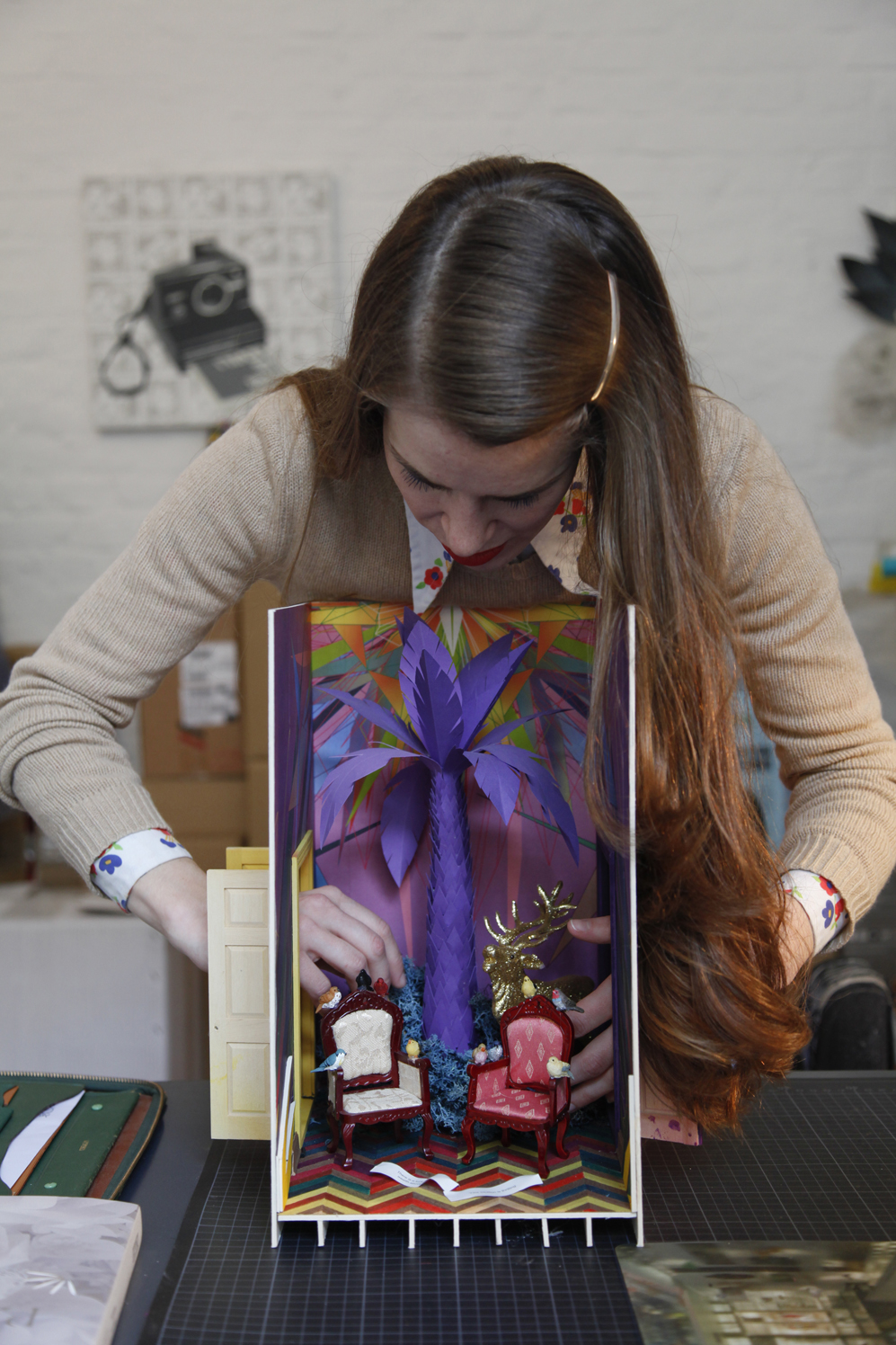
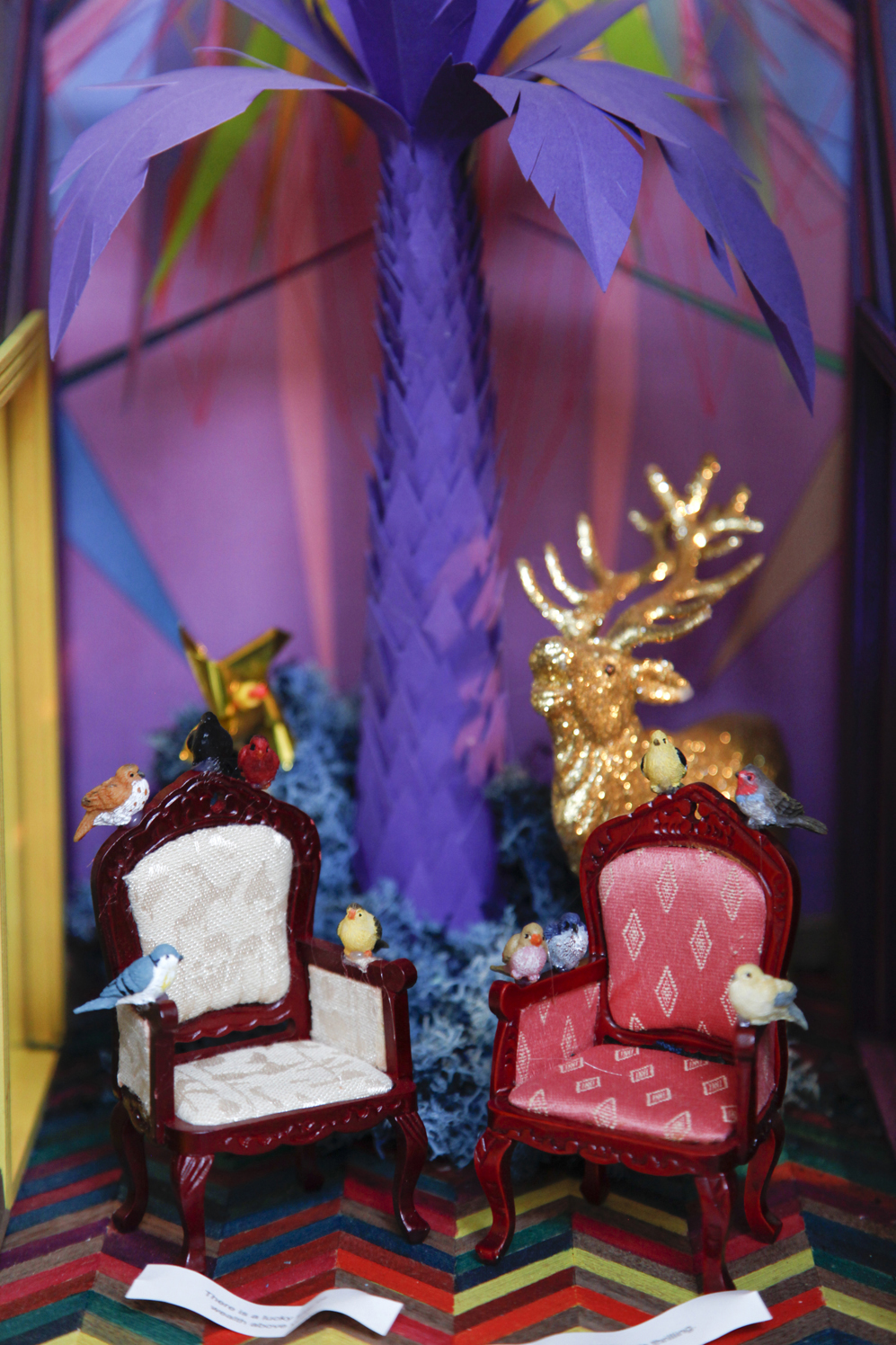
“Sometimes when I’m making, I feel like Gene Wilder’s character from Charlie and the Chocolate Factory.”
-
What are the challenges of working with paper?
It’s really tactile, you can manipulate it in so many ways—you can crunch it you can fold it you can wet it and put it into pulp. I don’t only work in paper, maybe I’ll pick up some fabric or plastic, it’s really sort of project permitting. There’s not much production and there’s also so many different forms of paper, some types have a metal surface which makes it very easy to sculpt and keep its shape. Sometimes it comes in light films…it’s just a really fantastic sculpting material but it always turns out really delicate, surreal, and beautiful.
-
What’s the inspiration behind this model of Berlin?
It’s another fun project. When I first came to Berlin I went to this club Kater Holzig, it’s not around anymore…It was that time when I was like, ‘Hmm, I dunno about Berlin,’ and then I went there for maybe half an hour and someone threw glitter at me and I was like, ‘Oh my god this is magical.’ My first memories had been sort of dark and dingy, but then I discovered this underlying hyper technicolor. So this is my inspired model of the city.
You know, when I was a kid my favourite film was the Gene Wilder Charlie and the Chocolate Factory, the set is amazing. Gene Wilder plays such a weird character. I love the scene where he picks up the tulip tea cup and bites it. Sometimes when I’m making I feel like that character. I’m in my own chocolate factory.
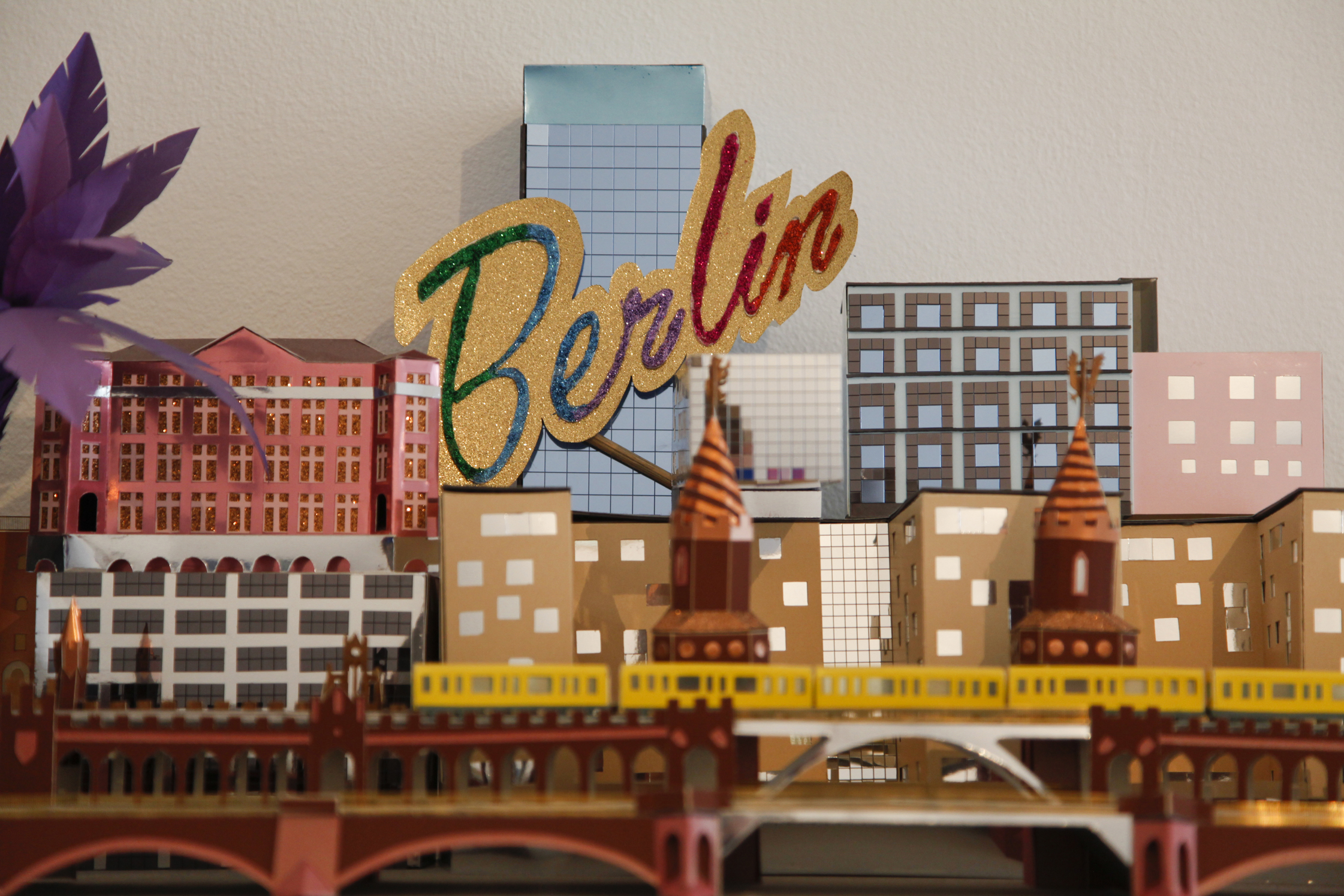
Thanks, Lacy, for bringing us into your home and sharing your studio practice. To immerse yourself in Lacy’s paper world, visit her website and follow her on Instagram.
Interview: Ruby Goss
Photographer: Jen Osborne
